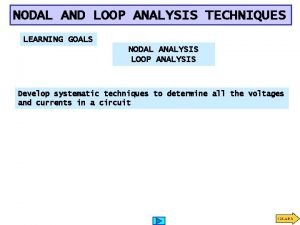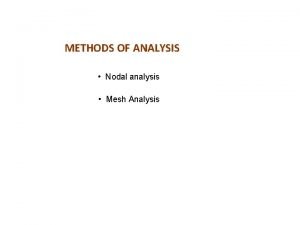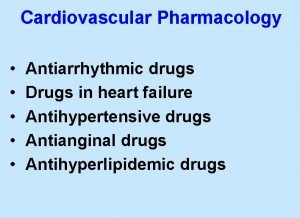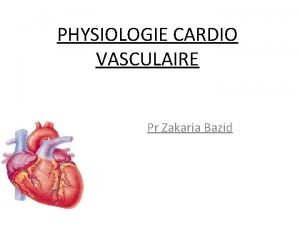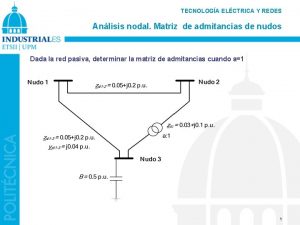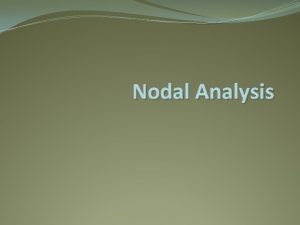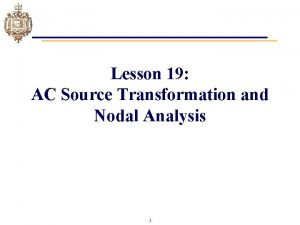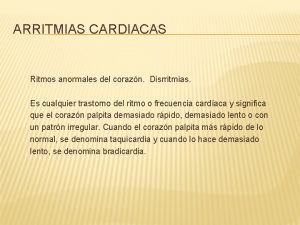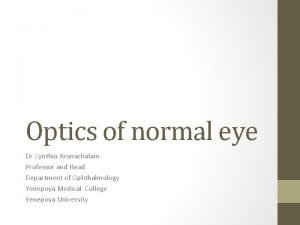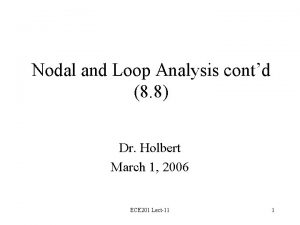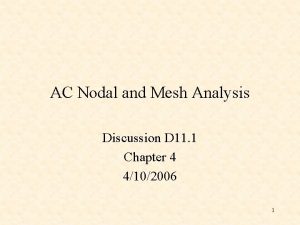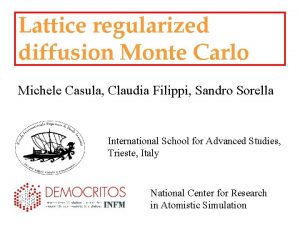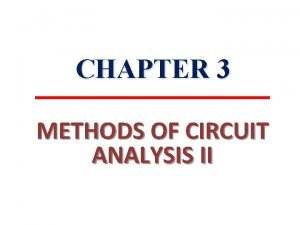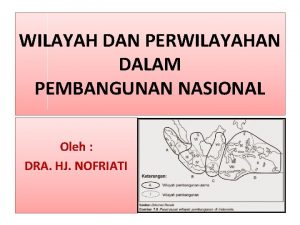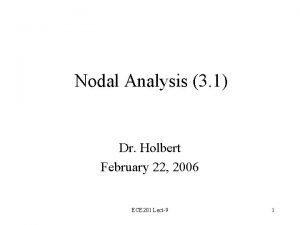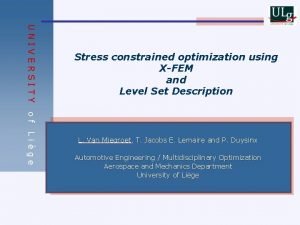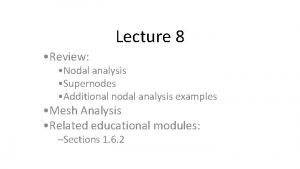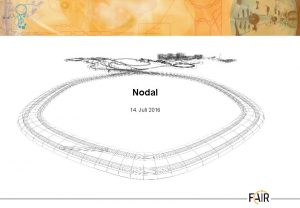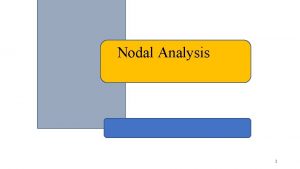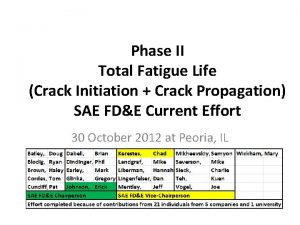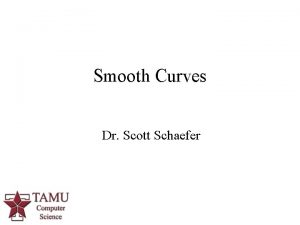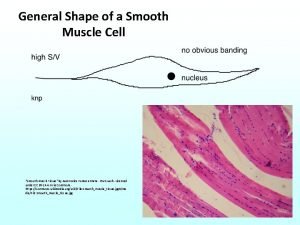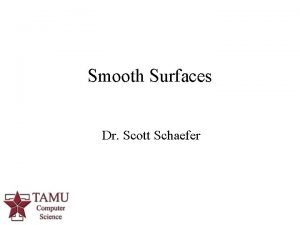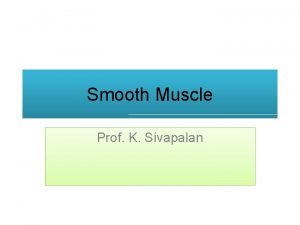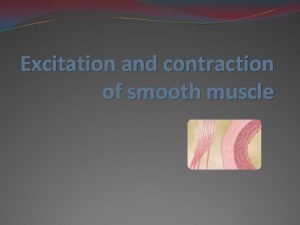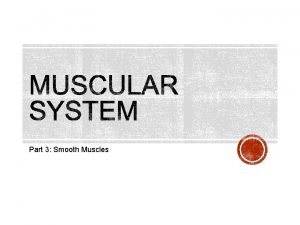Smooth nodal stress in the XFEM for crack

























- Slides: 25

Smooth nodal stress in the XFEM for crack propagation simulations X. Peng, S. P. A. Bordas, S. Natarajan Institute of Mechanics and Advanced materials, Cardiff University, UK 1 June 2013 I MAM Institute of Mechanic & Advanced Material

Outline Extended double-interpolation finite element method (XDFEM) p. Motivation üSome problems in XFEM üFeatures of XDFEM p. Formulation of DFEM and its enrichment form p. Results and conclusions

Motivation Some problems in XFEM Numerical integration for enriched elements Lower order continuity and poor precision at crack front Blending elements and sub-optimal convergence Ill-conditioning 3

Motivation Basic features of XDFEM More accurate than standard FEM using the same simplex mesh (the same DOFs) Higher order basis without introducing extra DOFs Smooth nodal stress, do not need post-processing Increased bandwidth 4

Double-interpolation finite element method (DFEM) ØThe construction of DFEM in 1 D Discretization The first stage of interpolation: traditional FEM The second stage of interpolation: reproducing from previous result Provide each node are Hermitian basis functions at

Double-interpolation finite element method (DFEM) ØCalculation of average nodal derivatives For node I, the support elements are: In element 2, we use linear Lagrange interpolation: Weight function of : Element length 6

Double-interpolation finite element method (DFEM) The can be further rewritten as: Substituting leads to: and into the second stage of interpolation 7

Shape function of DFEM 1 D Derivative of Shape function 8

Double-interpolation finite element method (DFEM) We perform the same procedure for 2 D triangular element: First stage of interpolation (traditional FEM): Second stage of interpolation : with regard to are the basis functions 9

Double-interpolation finite element method (DFEM) Calculation of Nodal derivatives: 10

Double-interpolation finite element method (DFEM) Calculation of weights: The weight of triangle i in support domain of I is: 11

Double-interpolation finite element method (DFEM) The basis functions are given as(node I): are functions w. r. t. example: , for Area of triangle 12

Double-interpolation finite element method (DFEM) The plot of shape function: 13

The enriched DFEM for crack simulation DFEM shape function 14

Numerical example of 1 D bar Problem definition: Analytical solutions: E: Young’s Modulus A: Area of cross section L: Length Displacement(L 2) and energy(H 1) norm Relative error of stress distribution 15

Numerical example of Cantilever beam Analytical solutions: 16

Numerical example of Mode I crack Mode-I crack results: a) explicit crack (FEM); b) only Heaviside enrichment; c) full enrichment 17

Effect of geometrical enrichment 18

Local error of equivalent stress 19

20

Computational cost 21

22

23

24

Reference • Moës, N. , Dolbow, J. , & Belytschko, T. (1999). A finite element method for crack growth without remeshing. IJNME, 46(1), 131– 150. • Melenk, J. M. , & Babuška, I. (1996). The partition of unity finite element method: Basic theory and applications. CMAME, 139(1 -4), 289– 314. • Laborde, P. , Pommier, J. , Renard, Y. , & Salaün, M. (2005). High-order extended finite element method for cracked domains. IJNME, 64(3), 354– 381. • Wu, S. C. , Zhang, W. H. , Peng, X. , & Miao, B. R. (2012). A twice- interpolation finite element method (TFEM) for crack propagation problems. IJCM, 09(04), 1250055. • Peng, X. , Kulasegaram, S. , Bordas, S. P. A. , Wu, S. C. (2013). An extended finite element method with smooth nodal stress. http: //arxiv. org/abs/1306. 0536 25
 True stress and engineering stress
True stress and engineering stress Normal axial stress
Normal axial stress Chapter 10 stress responses and stress management
Chapter 10 stress responses and stress management Supernode
Supernode Nodal analysis
Nodal analysis Méromyosine
Méromyosine Retardo nodal
Retardo nodal Amiodarone mechanism of action
Amiodarone mechanism of action Find vo using mesh analysis
Find vo using mesh analysis Tissu nodal localisation
Tissu nodal localisation Nodal plane and radial node
Nodal plane and radial node Matriz nodal
Matriz nodal Nodal analysis steps
Nodal analysis steps Source transformations
Source transformations Cur 1
Cur 1 Nodal cells
Nodal cells Arritmia sinusal con cvp
Arritmia sinusal con cvp Listing's reduced eye
Listing's reduced eye Advantages of nodal analysis
Advantages of nodal analysis Wifs report format
Wifs report format Mesh analysis by inspection
Mesh analysis by inspection Nodal analysis
Nodal analysis Michele casula
Michele casula Mesh analysis
Mesh analysis Contoh wilayah nodal
Contoh wilayah nodal Nodal analysis
Nodal analysis



